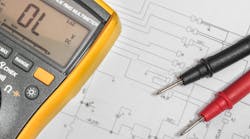Construction equipment used to repair and expand roads, highways and critical infrastructure will be getting cleaner thanks to a just-announced new rebate program announced by the U.S. Environmental Protection Agency.
The Construction Equipment Funding Opportunity pilot program provides public agencies and private entities under contract with public agencies access to federal funds to help replace older engines in construction equipment or purchase retrofit devices for older construction equipment resulting in near zero emissions.
“This new rebate program is a cost-effective means to apply our most advanced new clean diesel engines and clean air technologies to older but still valuable diesel-powered equipment that enables them to perform more like a new model,” said Allen Schaeffer, executive director of the Diesel Technology Forum (DTF), an educational non-profit representing the manufacturers of diesel engines, vehicles and equipment.
“Because of diesel’s unmatched and unique combination of power, performance, reliability, fuel efficiency and now low emissions, it is the technology of choice and the workhorse of the nation’s construction sector, powering more than three-fourths of all heavy construction equipment.”
The Construction Equipment Funding Opportunity pilot program provides up to $120,000 for up to five engines per applicant:
- Rebates to the owners of older construction equipment to either replace older engines that do not meet emissions standards with engines that meet either Tier 2 or Tier 3 standards.
- Rebates to the owners of equipment that meet more modern Tier 2 or Tier 3 emissions standards to install a diesel particulate filter, a proven technology that reduces fine particles, or soot, to near zero levels.
- Targeted public funding to retrofit or repower equipment found only in regions with poor air quality.
“This new rebate program dramatically streamlines the application process and reduces the burden from previous grant-based approaches. Schaeffer noted. “EPA has really worked hard to improve the process and reduce the paperwork required here down to a one-page application along with supporting documentation.”
Federal Assistance for the Construction Equipment Funding Opportunity pilot program is provided through the Diesel Emissions Reduction Act (DERA).
Eligibility
Eligible applicants for this funding opportunity include regional, state, local or tribal agencies with jurisdiction over transportation or air quality. Private entities that operate non-road construction equipment under a contract or lease with a public entity are also eligible to apply.
Applicants must operate their equipment in areas of poor air quality, and a full list of eligible counties will be made available by EPA after November 20.
Applicants may submit one application that includes up to five engines. These five engines can be any combination of the technology options for a total maximum of $120,000 in rebate funding per applicant.
The deadline to apply is January 15, 2014, after which time grants will be awarded on a lottery system.
For more detailed information about the program requirements, eligible applicants and engines, visit: http://epa.gov/cleandiesel/dera-rebate.htm.
“Upgrading the emissions performance of existing diesel engines and equipment through incentives such as rebates is a growing success story, said Schaeffer. “Studies have shown that for every $1 in public investments made through DERA programs, attracts an additional $3 in non-federal matching funds including private sector investment to provide anywhere from $7 to $18 in benefits returns in the form of cleaner air and environmental benefits.”
DERA
The Diesel Emission Reduction Act has helped reduce emissions from older diesel-powered vehicles and equipment beginning since 2008. The U.S. Environmental Protection Agency estimates that projects receiving incentive funding between 2008 and 2010 reduced emissions of NOx, a smog forming compound, by 203,000 tons, reduced emissions of fine particles, or soot, by 12,500 tons and CO2 by 2.3 million tons.
“Thanks to billions of dollars in research and investment by engine and equipment manufacturers, the new generation of 2014 construction machines now have near-zero emissions of nitrogen oxides and particulate matter,” Schaeffer said. “Diesel particulate filters included in today’s announcement will achieve 89 percent emissions reductions for particulate matter (PM) as well as 93 percent reductions for hydrocarbons (HC) and 90 percent carbon monoxide (CO) reductions from original emissions levels.”

